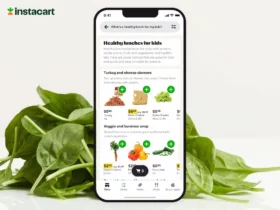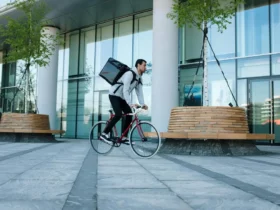As an Instacart shopper, I’m always on the hunt for ways to make my side gig more profitable. One burning question I’ve had is whether Instacart pays for the miles I drive. It’s a big deal because, let’s face it, gas isn’t cheap, and those miles can add up quickly.
I decided to dig into Instacart’s payment policies to see what the deal is with mileage pay. After all, understanding how you’re compensated for the distance you travel can make a significant impact on your earnings. Plus, I’ve got some tips on how you can save on fuel expenses to keep more money in your pocket. Let’s roll out the facts and get down to the nitty-gritty of Instacart’s approach to mileage.
What is Instacart Mileage Pay?
Definition of Instacart Mileage Pay
Instacart mileage pay is the amount that I get compensated for the distance driven from the store to the customer’s location. This pay is intended to cover part of the expenses related to gas and vehicle wear and tear during the delivery process. It’s important to note that this does not include the trip to the store or any miles driven after the delivery.
How Does Instacart Mileage Pay Work?
When I take on a gig with Instacart, mileage pay becomes a part of my overall earnings, conceptually separated from the base pay for shopping and delivering. Here’s how it breaks down:
- Base Pay: This is what I earn to shop for items and deliver them.
- Mileage Pay: An additional amount that’s calculated solely on the distance from the store to the customer’s delivery address.
Instacart advertises a payment of $0.60 per mile, which is somewhat higher than the standard IRS rate, which is great for my pocket. Every time I accept a batch, the batch earnings shown on my app screen include this mileage pay. If I’m looking at a trip with a delivery distance of 10 miles, that means an extra $6 just for the driving part; that’s on top of what I get for fulfilling the shopping list.
Here’s a breakdown of an average order’s earnings:
| Earnings Component | Amount ($) |
|---|---|
| Base Pay | 5.75-10.00 |
| Mileage (Per Mile) | 0.60 |
For instance, if the store-to-customer delivery distance is 22 miles, I can expect to see an additional $13.20 added to my payout. However, it’s essential that I keep track of these miles myself, especially for tax reasons, since Instacart does not compensate for the drive to the store or after the delivery has been completed.
Calculating Instacart Mileage Pay
Understanding the Mileage Rate
When I’ve chatted with fellow shoppers, I’ve found that some of us might be a bit fuzzy on how Instacart’s mileage pay really works. So here’s the scoop: Instacart’s base pay includes an amount for the miles driven from the store right to the customer’s doorstep. Remember, it’s the distance that’s covered after you’ve grabbed those grocery bags and headed out for delivery. Instacart has advertised that for every mile we travel, we’re getting $0.60. That’s pretty straightforward.
Tracking Your Mileage
Tracking my mileage is crucial because Instacart isn’t going to do that for me, and not keeping tabs means I might end up losing money. Why? Because those miles are money in my pocket when tax season rolls around. I’m responsible for this as an independent contractor. To ensure I’m not tossing hard-earned cashout on Instacart out the window, I’ve got a few strategies. I can keep a mileage tracking log book in my car or go high-tech with a mileage tracker app that does the work for me. Some apps can be a real lifesaver, especially because you need to track your mileage for taxes.
How to Calculate Your Instacart Mileage Pay
Calculating my Instacart mileage pay isn’t rocket science, thank goodness. Let me break it down. If I’ve got an order that takes me 12 miles from the store to the customer, I just multiply those 12 miles by the $0.60 per mile rate Instacart offers. So, 12 multiplied by 0.60 gives me $7.20. This is what I’ll see reflected in my batch earnings for that delivery. However, it’s not all roses. There are costs like gas and vehicle maintenance that I’ve got to cover myself. This is where knowing the IRS Mileage Deduction for 2023 comes in handy – it’s $0.655 per mile. By tracking these drives and claiming the deduction, I’m making sure I’m seeing the real picture of what I’m earning.
| Mileage | Instacart Pay | IRS Deduction |
|---|---|---|
| 12 miles | $7.20 | $7.86 |
From this, it looks like I’m making a bit more than the cost I’m putting into my car, but this is a simplified example. The real deal includes the extra costs I’ve talked about earlier, so I’ve always got to keep my math sharp.
Factors That Affect Instacart Mileage Pay
Understanding the dynamics of Instacart mileage pay isn’t just about knowing the per-mile rate—it’s about grasping the various elements that influence earnings. In this section, I’ll break down the main factors that can significantly affect how much you make from driving miles with Instacart.
Distance Traveled
The distance you cover on your grocery delivery trips plays a crucial role in your overall Instacart income. Delivery miles—the distance from the store to the customer’s doorstep—are the most transparent factor Instacart acknowledges in their payout reports. Yet, it’s imperative to consider the dispatch miles too, which refer to the trip from your location to the store. Though not reimbursed by Instacart, they’re fundamental to the job and can be substantial, directly affecting your expenses.
| Distance Type | Description |
|---|---|
| Dispatch Miles | From job acceptance location to the store |
| Delivery Miles | From the store to the delivery destination |
Type of Vehicle Used
The vehicle you choose for your Instacart shopping duties is another significant factor. Different vehicles have varying levels of fuel efficiency, maintenance costs, and depreciation rates. For instance, driving a fuel-efficient compact car typically incurs less in gas and overall upkeep than a larger SUV, which might be more costly to maintain and fuel. Also, consider the vehicle’s depreciation—a larger, more expensive vehicle could depreciate more quickly, affecting your net earnings in the long run.
Geographic Location
Where you’re delivering can impact your pay in more ways than one. Geographic location influences factors such as:
- Average batch payments: these can vary widely from one area to another.
- Gas prices: these are often costlier in urban areas compared to rural locations.
- Road conditions and traffic: more dense areas can lead to longer delivery times, impacting the number of deliveries you can complete.
- Cost of living: in regions with a higher cost of living, there may be a higher concentration of orders that include greater tips.
Each of these elements interplays with the others, shaping the financial landscape of your Instacart mileage pay. Understanding these factors can guide you in optimizing your Instacart strategy to better align with your financial goals.
Maximizing Your Instacart Mileage Pay
Optimal Route Planning
When I’m out making deliveries, I’ve learned that the key to maximizing Instacart mileage pay is efficient route planning. While Instacart may not directly reimburse for gas, they do include compensation for miles from the store to the customer in the base pay. To make the most of this, I map out my deliveries using forward-thinking apps like Upper Route Planner which automatically optimizes my delivery routes. Not having to second-guess my course saves time, fuel, and ultimately boosts my earnings.
The app’s algorithm factors in traffic, weather, and roadblocks, sparing me from potential delivery delays. By importing addresses and scheduling multiple stops in advance, I find myself zipping through tasks, not just saving on gas but also fitting in more deliveries per day. Plus, I’ve noticed that quick and efficient deliveries also enhance my reputation with customers, which can lead to more favorable reviews and potentially more work.
Efficient Delivery Strategies
I’ve picked up that efficiency is more than just the path I drive – it extends to how I shop and deliver. By familiarizing myself with the layout of local grocery stores, I can navigate them swiftly, picking items in a logical order to avoid backtracking. And, when I use Instacart’s suggested replacements for out-of-stock items, it keeps my shopping trips quick and hassle-free.
Partnering with veteran Instacart shoppers and learning their tricks of the trade has proven invaluable. Some of the best tips I’ve adopted include:
- Shopping in sections to minimize back-and-forth
- Using the deli counter wait time to pick nearby items
It turns out, by controlling my in-store efficiency, I’ve managed to complete more orders in less time – without the need to rely solely on Instacart’s batch payment algorithm.
Vehicle Maintenance and Fuel Efficiency
Lastly, I can’t stress enough how important vehicle maintenance and fuel efficiency are for keeping my earnings up. After all, lower fuel costs mean more profit from my mileage pay. To keep my car running smoothly and efficiently, I stick to a regular maintenance schedule, paying close attention to tire pressure and oil changes. Driving smoothly, avoiding heavy acceleration and hard braking, also goes a long way.
I’ve also discovered that using gas cash-back reward apps can provide significant savings. And let’s not forget about tracking mileage for potential tax deductions – that’s a big deal come tax time. By doing all this, I’ve found myself spending less on gas and maintenance, which means I get to keep a larger slice of my earnings to myself.
Conclusion
I’ve walked you through the ins and outs of boosting your Instacart mileage pay and I hope you’re now equipped with some solid strategies to earn more. Remember, it’s all about working smarter, not harder. Keep those wheels rolling smoothly and your routes optimized. Don’t forget to keep an eye on those tax deductions too—they’re the cherry on top of your hard-earned pay. Here’s to making every mile count and every delivery a step towards a more profitable journey!













